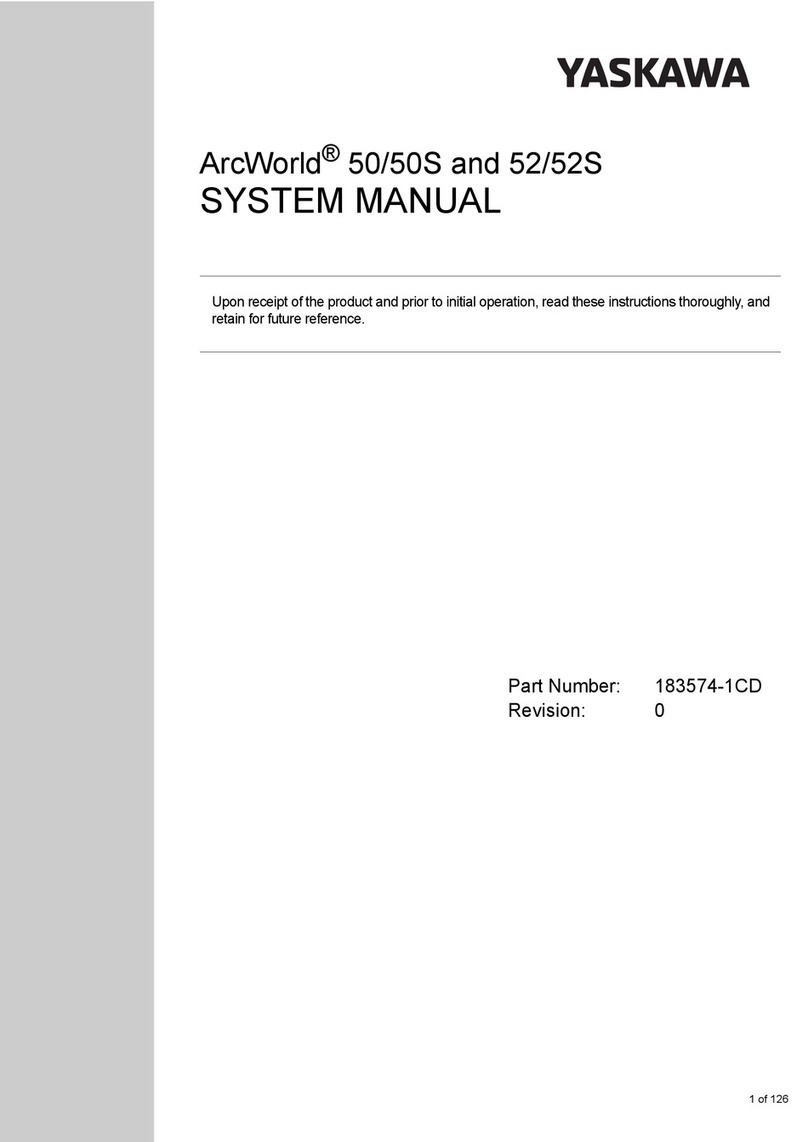
4
WARNING
Be sure to observe the following warnings to avoid serious injury to personnel.
• Be sure to observe the precautions in this instruction manual although this welder is designed
and manufactured with sufficient consideration given to safety.
Failure to observe this warning may result in death or serious injury to personnel.
• Observe the regulations and your own references for the construction of the input power sources,
selection of the installation site, handling of high-pressure gases, storage and piping, storage of
manufactured products after welding, disposal of wastes, etc.
• Do not let personnel to approach the welder or welding sites unnecessarily.
• Any person using a pacemaker must not approach the welder or welding site under operation
unless permitted by doctor.
The welder generates a magnetic field around it during current conduction, resulting in bad
influence on the pacemaker.
• In order to secure safe operations, only a trained or qualified person who has understood the
welder must perform installation, maintenance and inspection, or repair of the welder.
• In order to secure safe operations, only a person that has understood this instruction manual and
has knowledge and techniques to handle the welder safely must operate the welder.
• Do not use the welder for any applications other than welding.
Be sure to observe the following warnings and use protectors to
protect yourself or other people from the fumes or gases
generated at welding.
• In order to prevent gas poisoning or suffocation, use a local air
exhaust facility specified by regulations such as labor safety and
sanitary regulations or dust trouble preventive regulations or use
effective protectors for breathing.
Fumes or gases generated at welding may harm your health.
• When welding in a small space, be sure to ventilate the site sufficiently or use breathing
protectors. At the same time, operations must be done under trained supervisor.
Welding operations at a small space may result in short of the air, causing a person to be suffocated.
• Do not perform welding near degreasing, cleaning, or spraying operations.
Failure to observe this warning may generate extremely noxious gases.
• Before welding coated steel plates such as galvanizing, lead, or cadmium steel plates, remove
the coating materials or wear protectors for breathing.
Welding such coated steel plates generates noxious fume.































